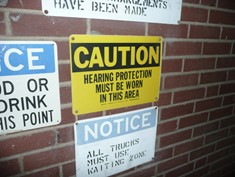Noise Reduction Rating (NRR)
Noise Reduction Rating (NRR) is a standard measurement used in the United States to indicate the level of sound reduction provided by hearing protection devices, such as earplugs and earmuffs. It is expressed in decibels (dB) and represents the theoretical amount of noise that the device can reduce when worn correctly. A higher NRR value suggests greater effectiveness in diminishing the intensity of environmental noise.

What is NRR?
The NRR is determined through controlled laboratory testing by manufacturers and is regulated by the U.S. Environmental Protection Agency (EPA). The testing process involves exposing hearing protection devices to different frequencies of sound and measuring the attenuation, or reduction, in noise levels. The resulting data are then used to calculate the average sound reduction across frequencies, giving the NRR value.
For example, a hearing protection device with an NRR of 30 dB means that it can potentially reduce the noise level by 30 dB when properly fitted. However, the real-world effectiveness of the device often differs due to factors like improper fit, the nature of the noise, and individual variations in ear canal shape.
Practical Application
To determine the actual level of noise reduction provided by a device with a specific NRR, a de-rating system is commonly applied. According to the Occupational Safety and Health Administration (OSHA), the real-world noise reduction can be estimated by subtracting 7 dB from the NRR and then dividing by 2. This adjusted value more accurately reflects the protection level one might experience in a typical usage scenario.
Example Calculation: If an earplug has an NRR of 25 dB, the estimated real-world noise reduction is calculated as follows:

This means in a practical setting, the earplug may reduce the noise by about 9 dB, assuming proper usage.
Why is Understanding NRR Important?
Understanding the NRR of hearing protection devices is crucial for workers and individuals exposed to high levels of noise, as prolonged exposure can lead to noise-induced hearing loss (NIHL). Employers and safety officers use NRR values to select appropriate hearing protection for different noisy environments to ensure compliance with safety regulations and protect workers’ hearing health.
What Are the Limitations of NRR?
While NRR provides a valuable benchmark for comparing the protective capabilities of different hearing devices, it does not account for all variables in actual environments. Users must ensure that hearing protection fits well and is suitable for the type of noise exposure (continuous vs. impact noise), as these factors significantly influence effectiveness.
Conclusion
The Noise Reduction Rating is an essential tool in the field of occupational health and safety, providing a standardized method to gauge the potential effectiveness of hearing protection devices. By understanding and correctly applying NRR, individuals can significantly reduce the risk of hearing damage in noisy environments.
For visual reference, a diagram explaining how NRR is measured and applied would be useful. However, in this format, I’m unable to generate images. In practical applications, users would benefit from seeing charts or graphs that illustrate different NRR values and the corresponding levels of noise reduction in various work environments.
